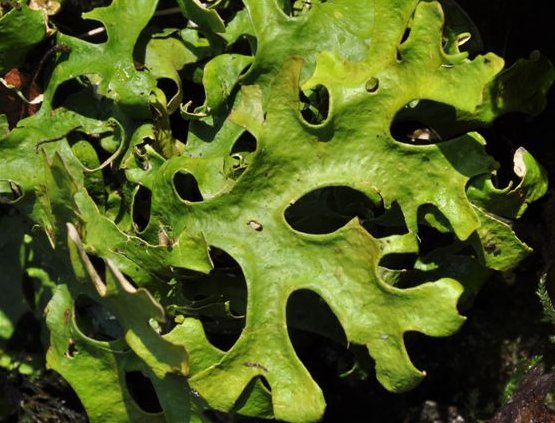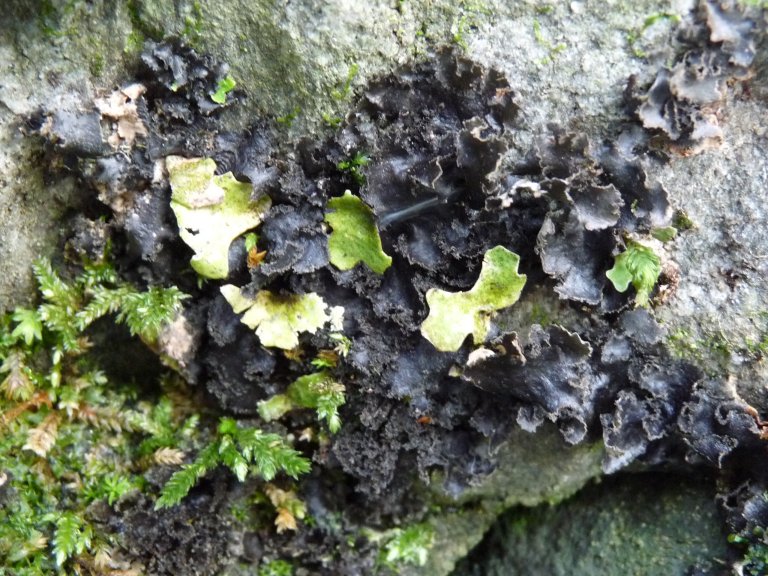Sticta canariensis
Whilst most lichen-forming fungi form an association with just one species of alga or cyanobacterium a few form a lichenised partnership with more than one. When one algal partner is a green alga and the other a cyanobacterium it is perhaps not surprising that the resultant lichens can look very different from one another. So great can be this difference that they have been given different scientific names.This unfortunately breaches the widely accepted convention that the name of a lichen is the name of its fungus since the fungi are considered to never be able to complete their life cycle without the algae or cyanobacteria whilst the algae and cyanobacteria are still capable of an entirely independent existence and so have their own names.
 |
 |
| Photo: Liz Fleming-Williams | Photo: Ray Woods |
Once it was established that the same fungus was involved with two different photosynthesising partners a decision had to be made as which of the two names should be used. The name Sticta dufourii had been applied for many years to the lichen with cyanobacteria as a photobiont and Sticta canariensis to the same fungus having a green alga as a photobiont. The latter name was adopted. So S. dufourii became S. canariensis cyanobacterial morph (or morphotype or photomorph) and S. canariensis became S. canariensis green algal morph (or morphotype or photomorph). The cyanobacterial morphotype is much more common in Britain and Wales than the green algal morphotype. Occasionally the green morph can be found growing out from the edges of the lobes of the cyanobacterial morph and very very rarely can the green algal morph be found growing on its own.
Section 42 lists only the green algal containing morphotype as being in need of special protection. Woods & Coppins (2003) specifically evaluate the green morph stage only when it is independent of the cyanobacterial morph. This independence is not specified in Sect 42. This is perhaps just as well as few records of the green morph specify whether they were free living or growing on the cyanobacterial morph. It is probable that in Wales the green algal morphotype only occurs growing at least initially on the edge of the thallus lobes of the cyanobacterial morphotype (see photo below).
- Read more about Sticta canariensis
- Log in to post comments
